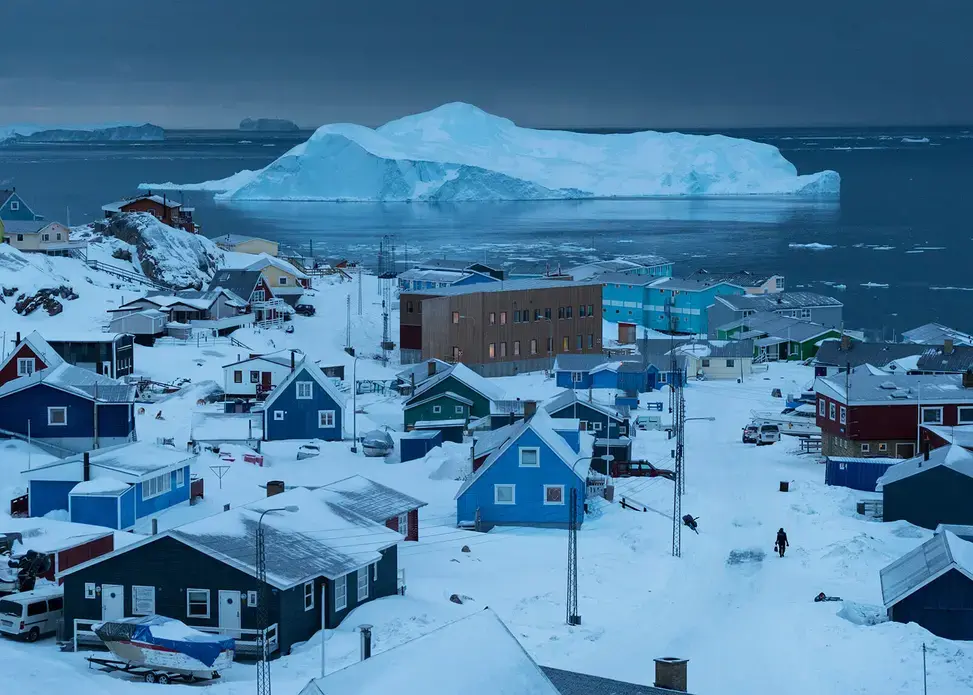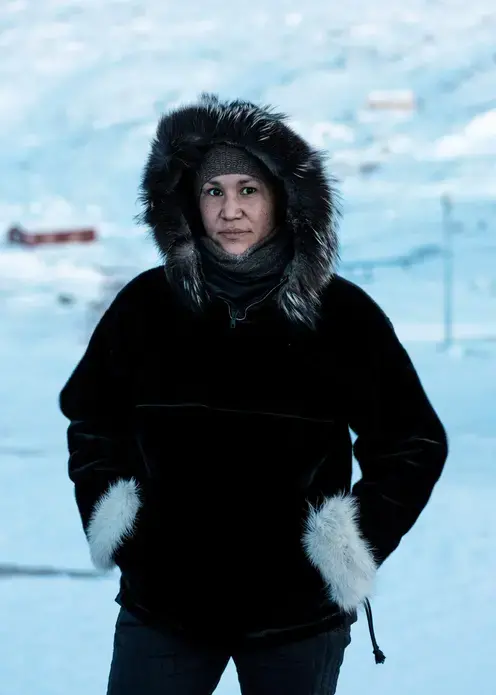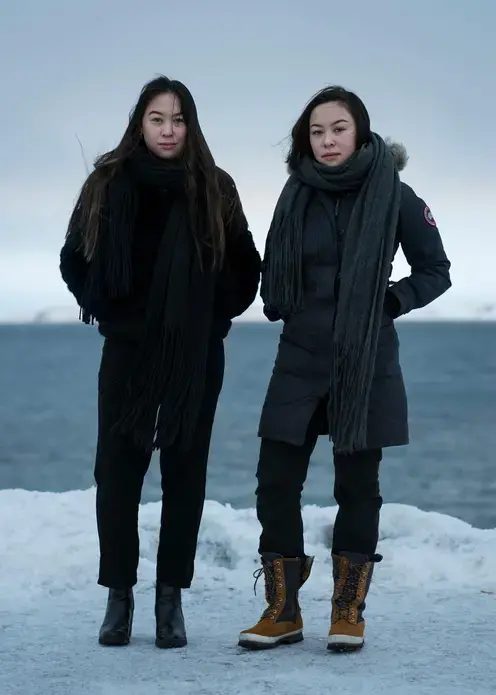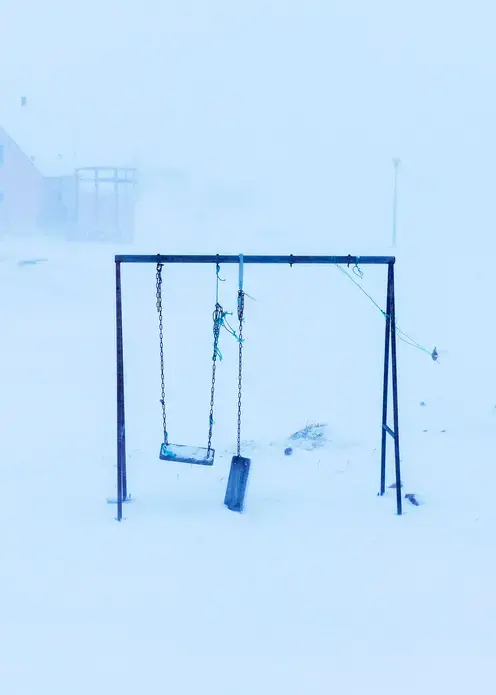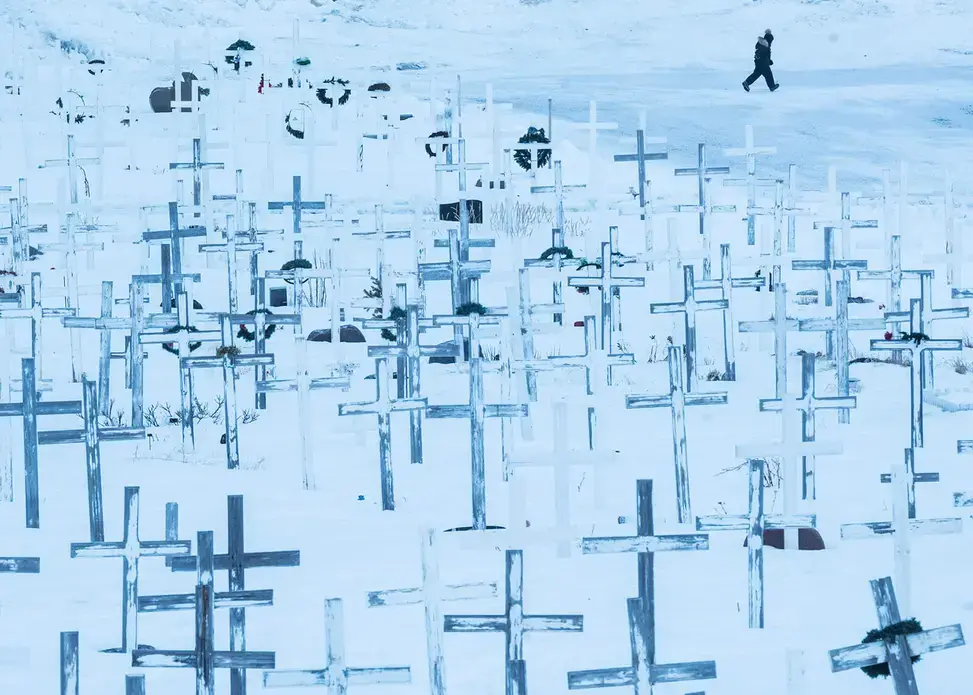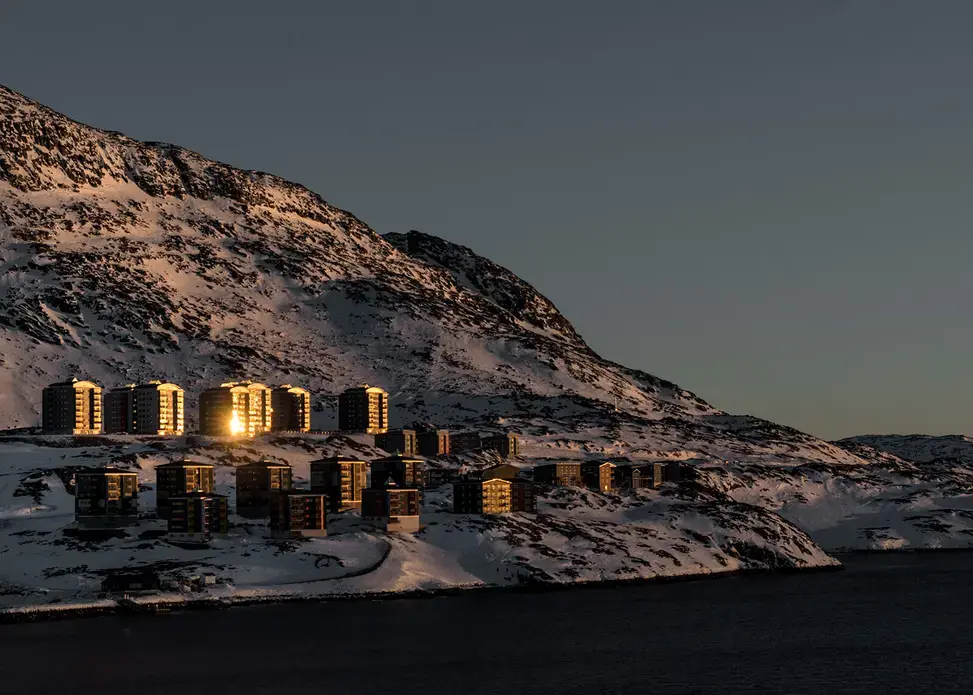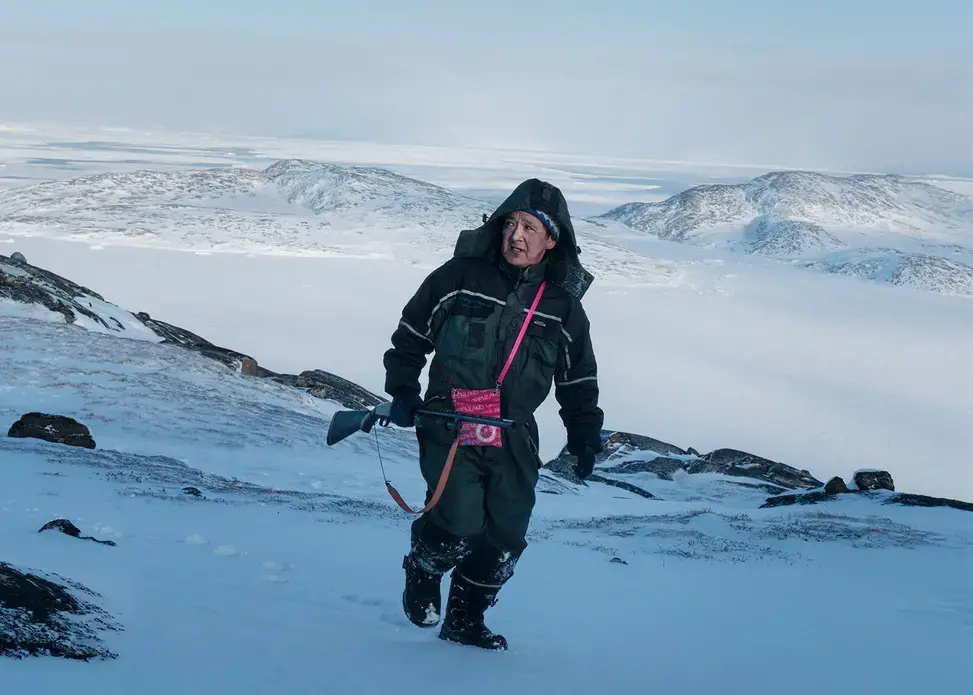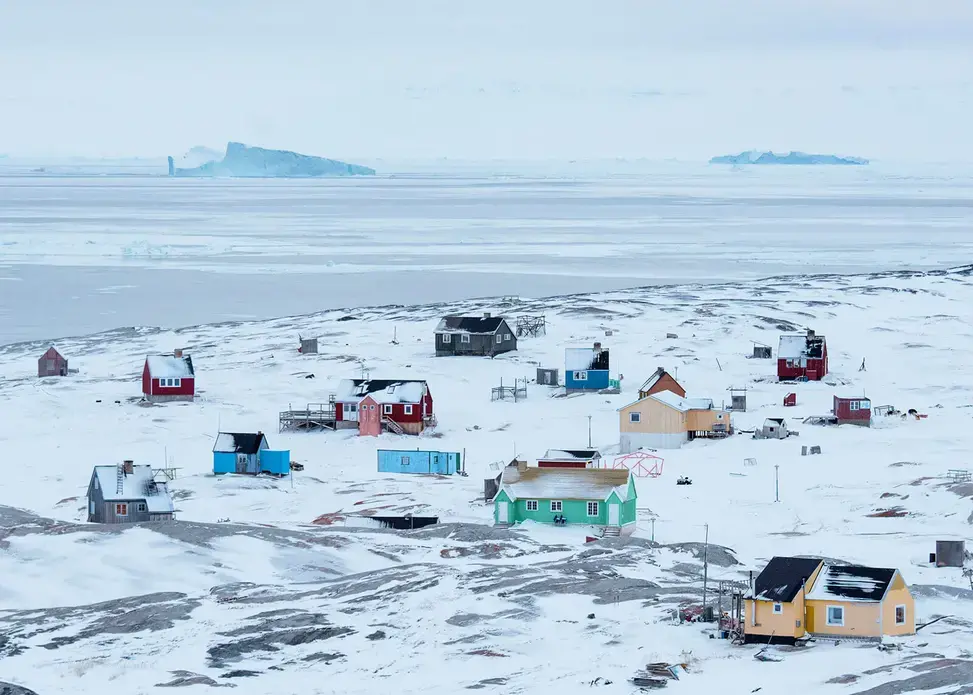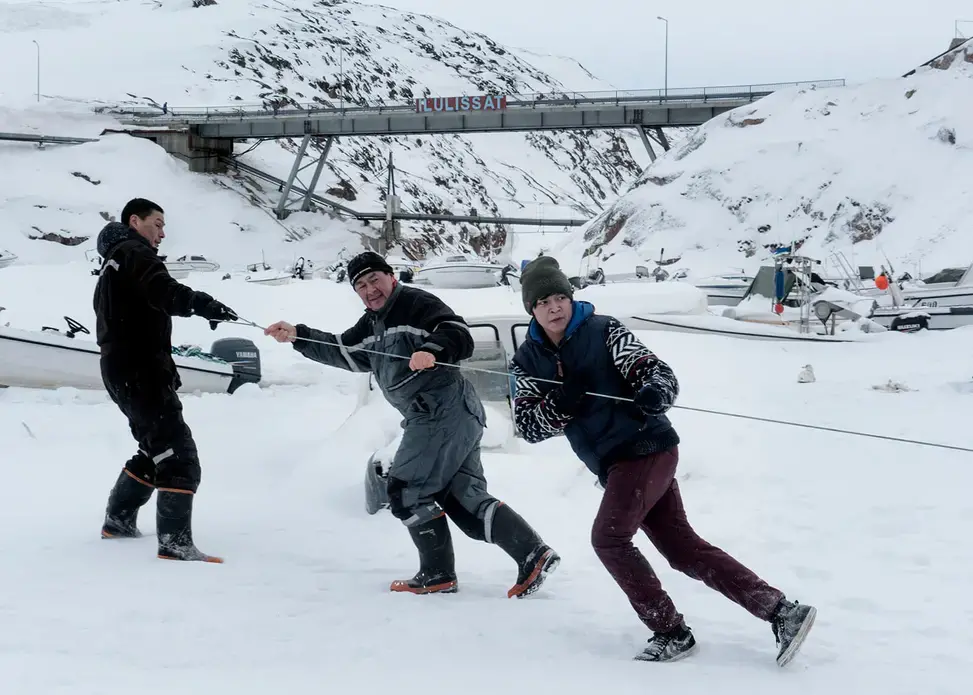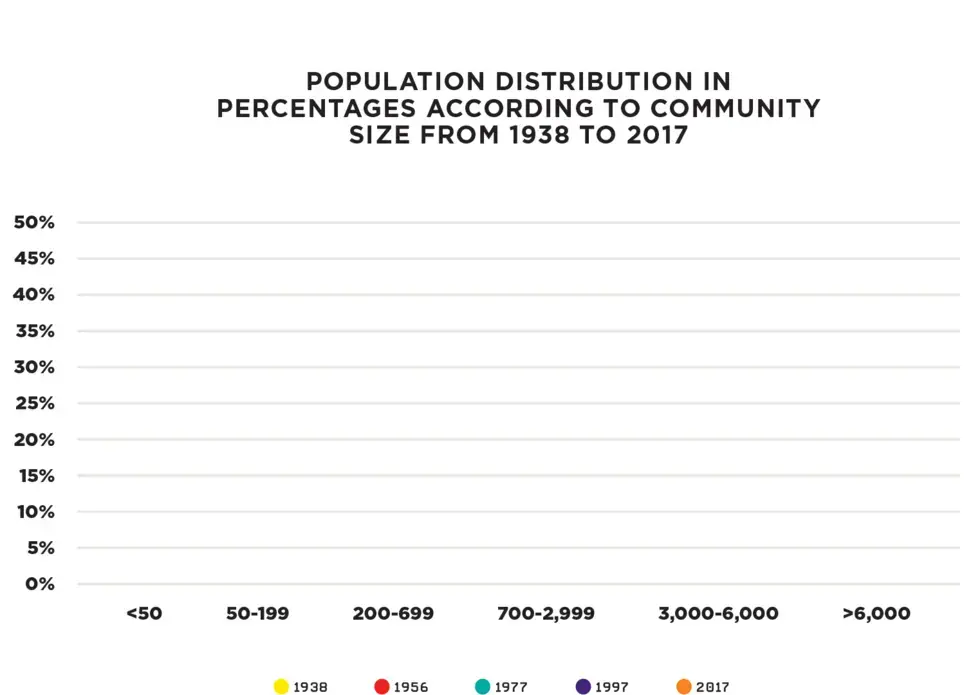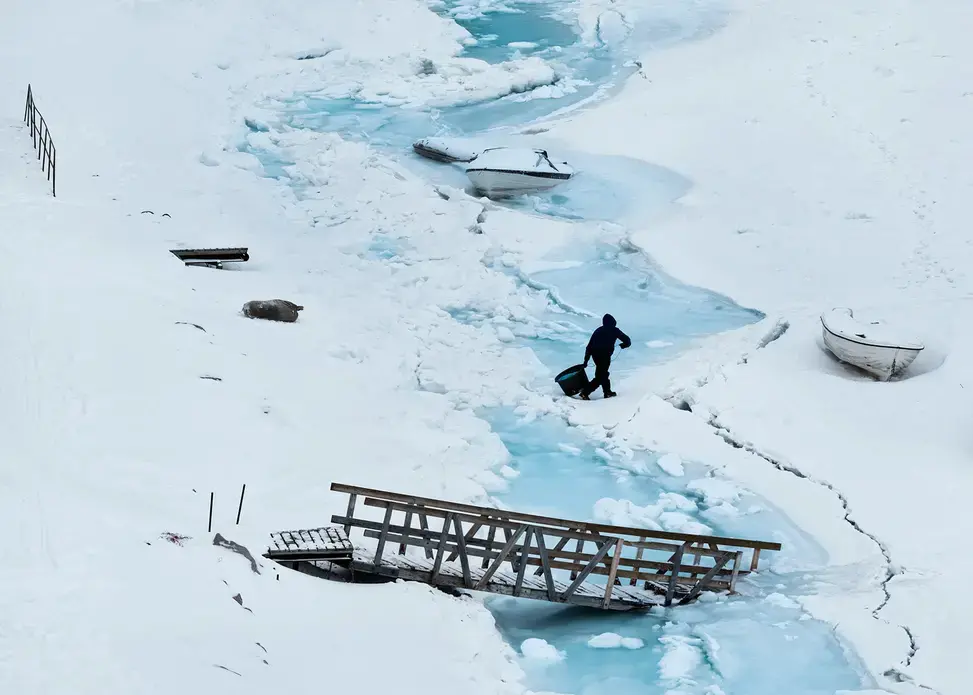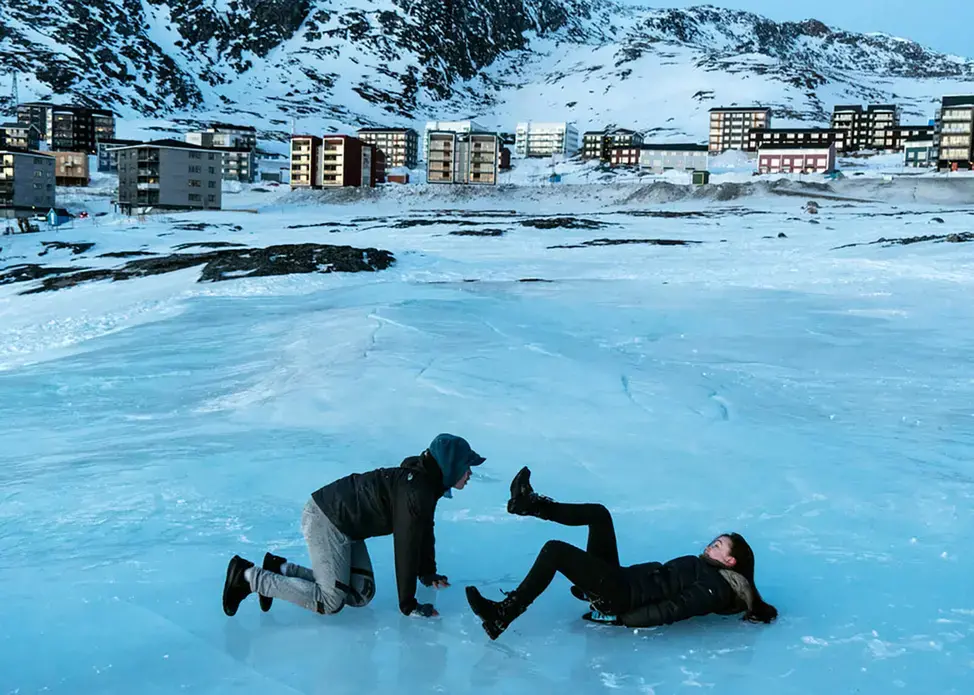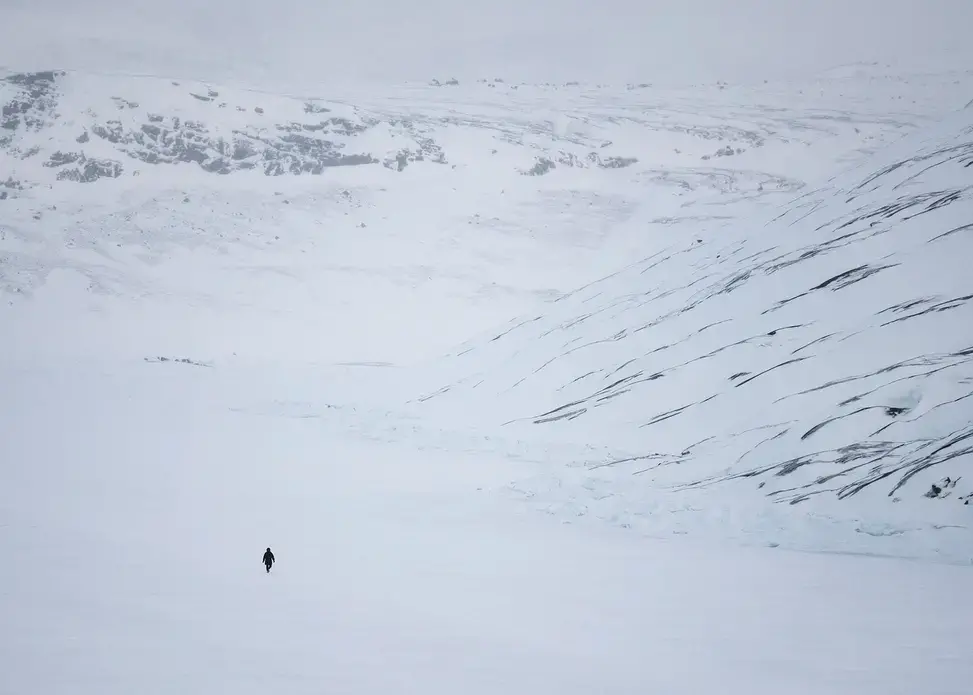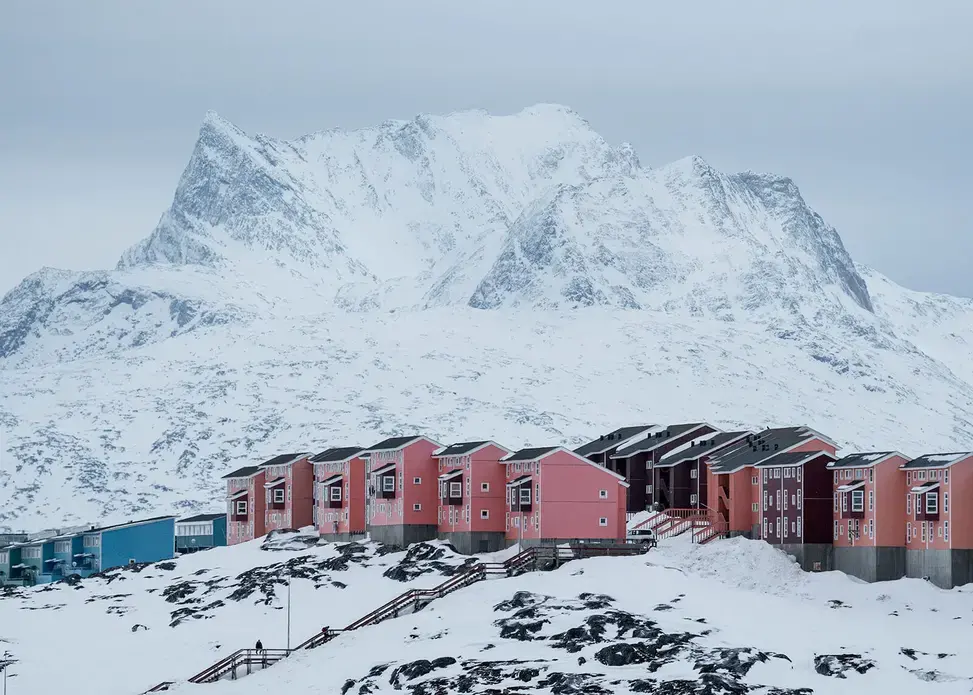Ivalo Olsen is the only teacher in Oqaatsut, a cluster of red, blue, and yellow buildings on the rocky western coast of Greenland.
There are just five children enrolled in the village's elementary school, aged six to 12. When the weather allows, Olsen enjoys the silence of the sleepy village during long walks on the ice, looking out at the icebergs floating in Disko Bay. But the winters are long, dark, and lonely. She wants to start a family of her own, but she's found no romantic prospects among the city's 22 voting-age adults. She plans to leave Oqaatsut when the school year ends.
Oqaatsut's population, like that of many of Greenland's rural settlements, has been shrinking for decades. Many young Greenlanders are leaving small villages for more urban centers, both in Greenland and abroad, in search of educational and occupational opportunities that don't exist in rural areas. Far more women leave than men.
The trend began after World War II, when Demark, which first claimed Greenland in 1721, kicked off its efforts to modernize its Arctic colony. Danish men arrived in Greenland as civil servants and construction workers, and many returned to Denmark with Greenlandic wives. At its most extreme, the Danish plans to modernize the country involved forced urbanization. Entire communities were uprooted and resettled in larger towns like Nuuk (then known as Godthab), the capital city of Greenland. Today, many trace Greenland's soaring rates of suicide and alcohol abuse back to this social upheaval.
An island mostly under ice, Greenland has always been a treacherous place to live. Even today there are few roads between communities—residents must travel by air, boat, snowmobile, or dog sled. When the first European settlers arrived around 985 C.E., they found evidence that humans had been there but no living inhabitants. Some centuries later, the Arctic-adapted Thule Inuit people arrived from Canada and thrived in small, hunting-based communities until relatively recently. Just 80 years ago, nearly 70 percent of Greenlanders lived in small communities of fewer than 200 people; today, only 7 percent do.
Traditional gender norms run deep in the small villages—men were hunters or fishermen, and women homemakers—and while women now participate in the labor market, those roles are still entrenched. As a result, there are few opportunities for educated women in the small villages, where traditionally male-oriented vocations like hunting and fishing still dominate.
"The first who have the ability to move are the women, because they are capable of taking care of themselves," says Julia Knudsen, who spent more than a decade living in Denmark after she left Greenland in 1999 to travel and get an education in computer science—a subject that was not offered at the time at the only full-fledged institution of higher education in the nation, the University of Greenland. "The ones who are left behind are mostly the men. Maybe they think they can only hunt, or don't see themselves surviving in the big city."
All of the kids in Oqaatsut must leave if they are to continue their education. There are no secondary schools in the small village, and, in a few years' time, when the youngest reaches eighth grade and heads to a bigger city for boarding school, the primary school could close.
"I don't know how the small village will be in 10 or 20 years," Olsen says—and Oqaatsut is hardly the smallest village. Olsen wonders about the toll it takes on villages to watch their community fade. "I don't worry about the students," she says. "I'm more worried about all the adults who have been living here for their whole lives."
- Visit our online curriculum for a lesson plan and full PDF of "Contested Lands."



